Editor’s note: The following is extracted from Air Force Heroes in Vietnam, by Donald K. Schneider (published 1979).
On the 10th of March 1966, Major Bernard F. Fisher and his wingman, Captain Francisco (Paco) Vazquez, took off from Pleiku Air Base in South Vietnam’s central highlands.
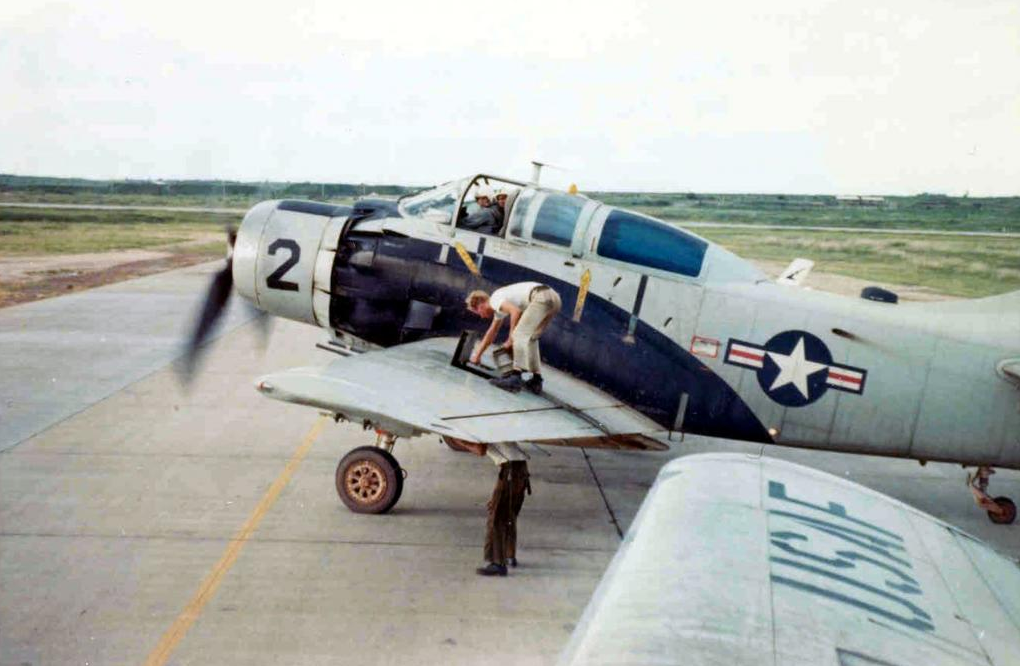
One hundred and fifty miles to the north, near the Laotian border, lay the Special Forces camp in the A Shau Valley. Twenty American Special Forces troops and 375 South Vietnamese soldiers were under attack by over 2,000 North Vietnamese Army Regulars. The siege was in its second day, and the defenders, who had been forced into a single bunker in the northern corner of the outpost, depended on American airstrikes to slow the enemy advance.
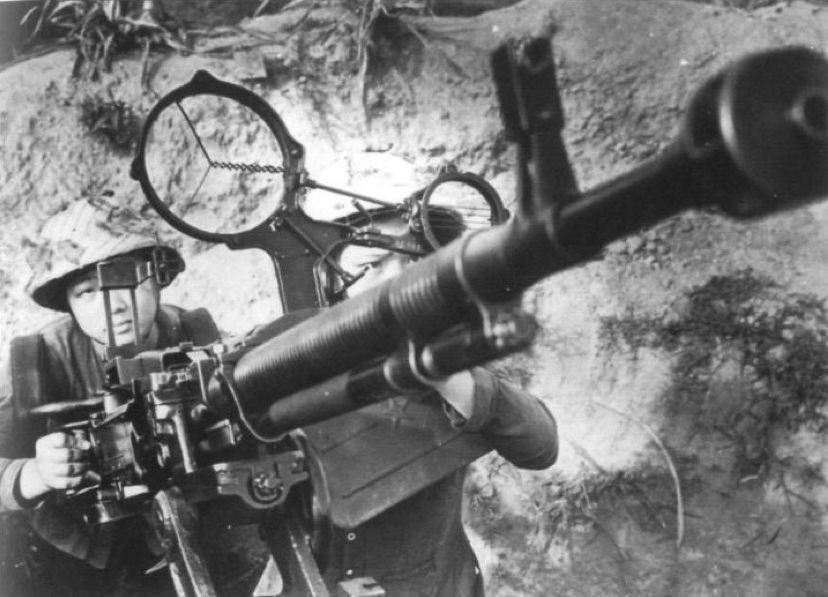
The North Vietnamese ringed the valley floor with more than 20 antiaircraft artillery pieces and hundreds of automatic weapons, making it a deadly flak trap for the slow-moving A-1Es. One pilot described it as “like flying inside Yankee Stadium with the people in the bleachers firing at you with machine guns.”
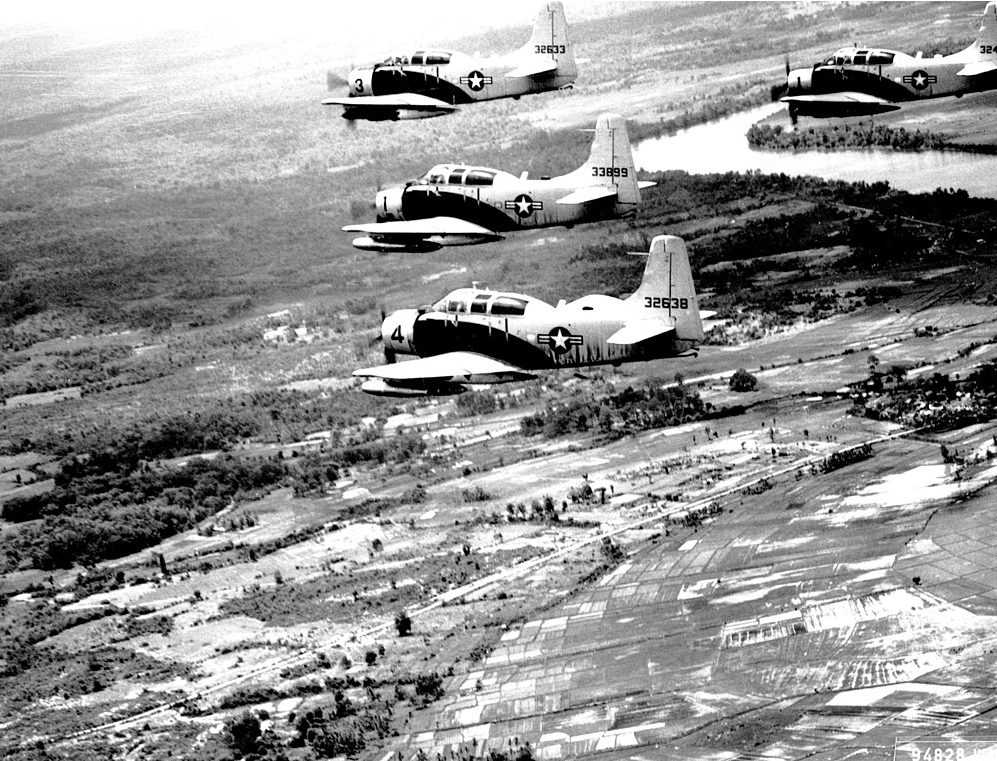
Major Fisher and Captain Vazquez joined four other A-1Es orbiting high above A Shau. The pilots were stymied by a deck of low clouds hanging over the valley. Major Fisher had flown here the day before in bad weather, and if there was a way to get down through the murk, he would find it. His luck held: as Bernie located a small hole in the undercast and led the formation of six Skyraiders down towards the jungle floor.
The A-1Es broke into the clear to find that the ragged cloud ceiling lay only 800 feet above the trees, obscuring the tops of the surrounding hills. They would be forced to operate at low altitude, constantly in the sights of the enemy gunners. The Skyraider pilots had nicknamed the narrow valley “the tube” because it was less than a mile wide and six miles long, and provided little maneuvering room for the bombing and strafing runs against the Vietcong.
Restricted by the weather and high terrain, the A-1Es could attack from just one direction. The pilots would be forced to fly straight down the valley, deliver their ordnance during a hard left turn, continue the turn into a tight 180° escape maneuver and race back up the valley. They knew that the North Vietnamese would fill the approach to the valley with a deadly curtain of groundfire.
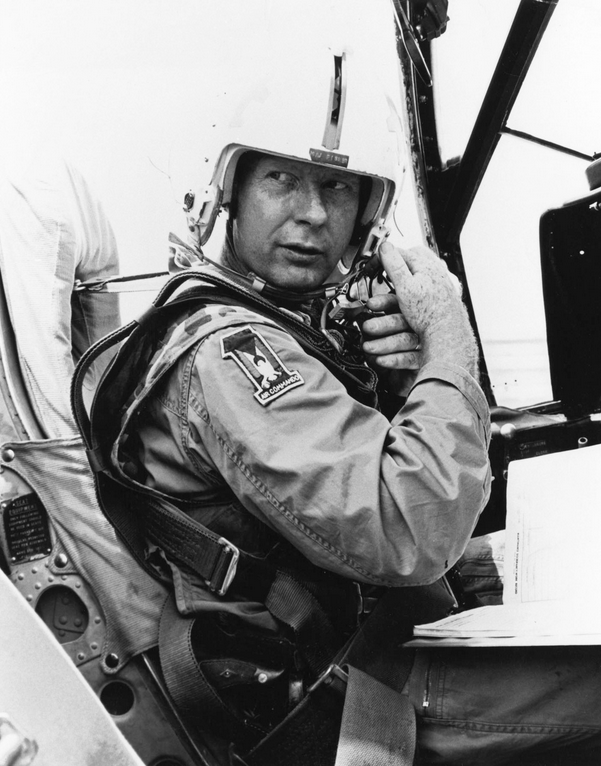
Bernie Fisher led a string of four Skyraiders on the first pass down the tube while an Army radioman described the hostile positions along the valley’s south wall. The enemy gunners found the range, shattering the canopy of Captain Hubert King’s aircraft with an accurate burst. No longer able to see out of the bullet-riddled windscreen and having missed death by inches, King pulled out of the fight and headed for Pleiku.
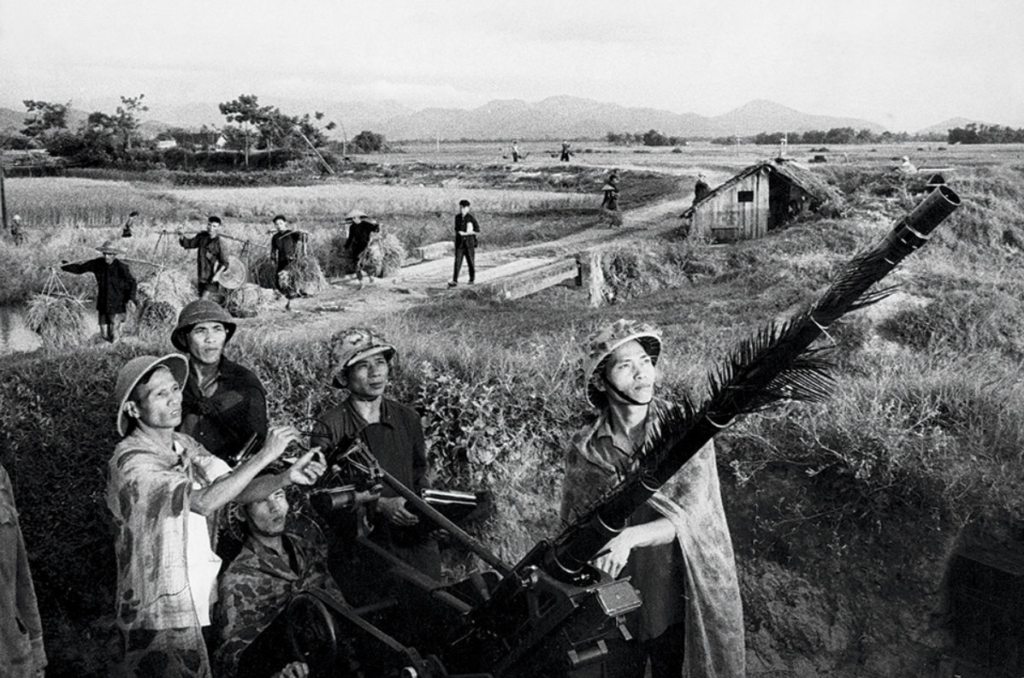
After attacking and escaping successfully, Bernie and the two remaining wingmen immediately hurtled back down the valley on a second strafing pass. Major Dafford W. (Jump) Myers felt his machine lurch. Jump remembered, “I’ve been hit by 50 calibers before, but this was something bigger, maybe the Chinese 37-millimeter cannon. Almost immediately the engine started sputtering and cutting out, and then it conked out for good. The cockpit filled with smoke. I got on the radio and gave my call sign, Surf 41, and said, ‘I’ve been hit and hit hard.’ Hobo 51 — that was Bernie — came right back and said, ‘Rog, you’re on fire and burning clear back past your tail.’ I was way too low to bail out so I told him I would have to put it down on the strip.”
Though the airstrip was controlled by the enemy and flanked by heavy guns, Jump Myers had no choice as he began a gliding turn toward the touchdown point. His forward vision was blocked by smoke and flame, so Bernie Fisher “talked” him into a proper alignment and rate of descent. As the crippled Skyraider crossed the landing threshold, Major Fisher realized that it was going too fast to stop on the short strip. Bernie warned him to raise the landing gear, and Jump retracted the wheels just before the aircraft settled on its belly. Bernie remembered, “He had tried to release his belly tank, but couldn’t, so it blew as soon as he touched. A huge billow of flame went up and the fuel made a path right down to where he stopped. He had skidded several hundred feet before he spilled off to the right side of the runwav. The flame just followed him right on down, caught up with him and the A-1E turned into a huge ball of fire. I thought he would get out right away — usually you can get right out and run — but he didn’t. It seemed like an awful long while. We estimated about 40 seconds because I made almost a 270-degree turn around him.”
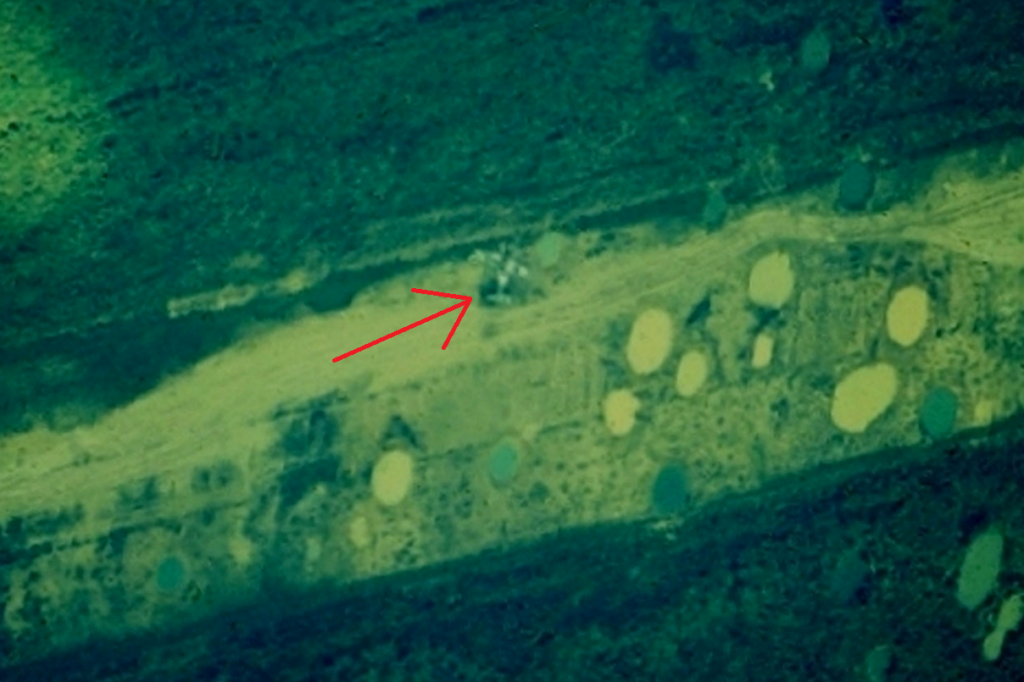
Bernie Fisher continued to circle the airstrip and notified the airborne command post that Myers was probably hurt and trapped inside the blazing aircraft. He would learn later that Jump was busy removing his parachute, helmet, gun, and survival kit so he could make a fast exit through the flames. Bernie has vivid memories of the scene on the battle-torn runway. “I continued my turn around on the east side of the strip and about that time Jump came out the right side of the airplane. I think the wind must have blown the flames away from the right side. He jumped out and ran, and it looked like he was burning. There was smoke coming from him, but I guess it was because he was so saturated with smoke in that cockpit. He ran toward the end of the wing, jumped off and ran a short distance to the side of the strip.”
Jump hid in the brush along one side of the runway opposite the enemy positions on the other side of the strip. He waved as Bernie flew directly overhead. Bernie now knew he was alive, but had noway of knowing if Jump was badly hurt. The airborne command post reported that a rescue helicopter would arrive in 20 minutes.
Bernie and Paco were joined by Captains Jon Lucas and Dennis Hague, and the four Skyraiders made repeated strafing attacks to protect the beleaguered fort and the downed airman.
Ten minutes later, the command post advised that the helicopter was still 20 minutes away and asked Bernie if he could rendezvous with the chopper above the overcast and escort the rescue bird down through the hole in the clouds. Bernie recalls, “I don’t think we could have done it. If we had gotten away from there, the VC would have been on him because they were all around him. They controlled the area, but he was pretty well concealed in the brush so they hadn’t gotten him.”
Bernie made a fateful decision and told the command post he would land and pick Myers up. “They kind of discouraged it. I know it really wasn’t wise; it wasn’t a very good thing to do, but it is one of those situations you get into. You don’t want to do it but you’ve got to, because he’s part of the family; one of our people. You know you have to get him out.”
“I told Control I would land, and came right down on the approach. Paco, my wing man, was right along with me, strafing. I was a little too hot — that is, a little too fast — and blowing smoke concealed the runway. When I got final I had to fly through the smoke so I kept the power on until I could see what was on the other side. I had a little too much power on. Even though I pulled it off and touched the gear to slow down, I was too far down the runway to stop.”
Describing his first landing on the debris-littered runway, Bernie said, “There was all kinds of garbage on there, metal that had blown over from the camp from some of the explosions — tin roofs, buckets and so forth. There were some barrels and somebody had dropped five or six 18-inch diameter rocket pods and I hit a couple of these but I didn’t hit anything else. I did a little dodging and weaving and got around the rest, but I was too fast to stop. I knew I would go off the end so I just gave it the power and took it around again.”
Bernie made a quick, tight 180° turn and landed in the opposite direction from the first approach. At an altitude of less than 100 feet throughout the maneuver, he wheeled through a hail of enemy fire. “I turned and touched down just about the end of the runway. I used all the brakes I could but the strip was only 2,500 feet long. This is the only time I was scared because it didn’t look like I was going to be able to stop. I just hit the brakes as hard as I could and pulled the flaps up which gave me a little more weight on the brakes. I think I must have been skidding on that steel planking. It was a little bit slick from the dampness. I actually went off the end of the runway a little ways. There were a lot of 55-gallon drums sitting out in the weeds and in my mind I was sure I would hit them. My tail did when I turned, but the wing went right over the tops of them.”
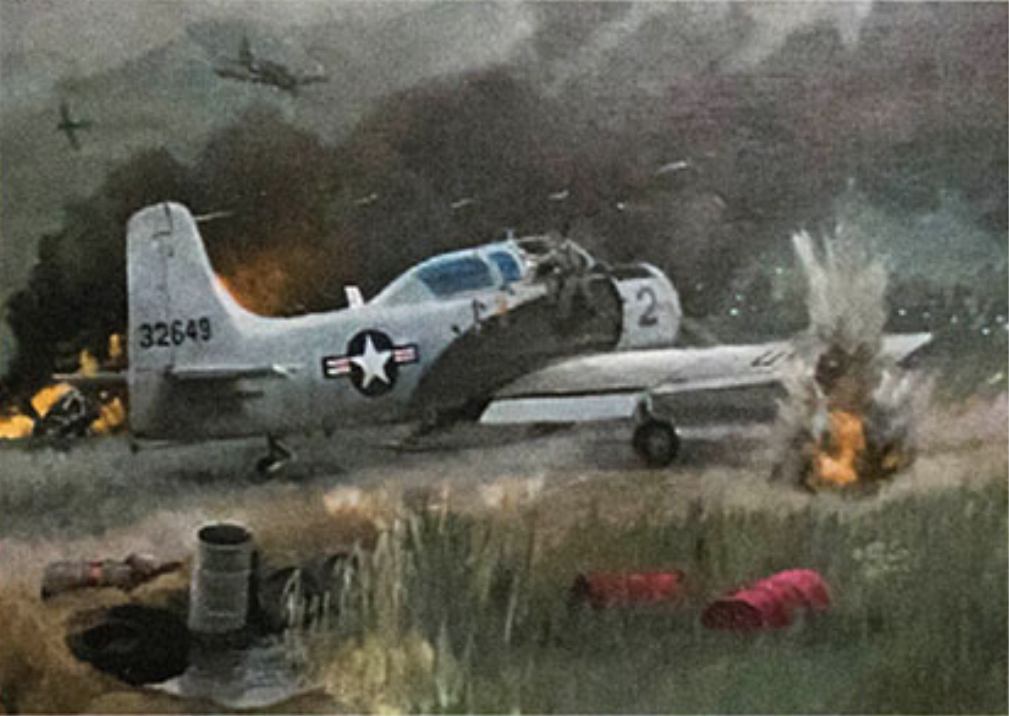
Fisher taxied at breakneck speed back down the obstacle course and searched for Jump Myers. “I knew about where he was and when I taxied by him he waved both arms vigorously. I stopped as soon as I could but taxiing as fast as I was it must have taken about 100 feel to stop. I waited just a moment expecting him to be right there with me; you know, right on the side. But he wasn’t.”
“I figured he must be hurt more than I thought — maybe he couldn’t move or something — so I set the brakes on the bird and climbed over the right seat to get out on the side he was on. I looked through the mirror and saw two little red, beady eyes trying to crawl up the back of the wing.” Bernie grabbed Jump by the seat of the pants and pulled him headfirst onto the floor of the cockpit. “It was hard on his head but he didn’t complain,” Bernie recalled. Myers said later that he ran as fast as his 46-year-old legs could carry him.
Major Fisher jammed the throttle to the wall and maneuvered the accelerating Skyraider around the shell craters and debris while the North Vietnamese concentrated their fire on the fleeing target. He lifted off at minimum speed and held the bird down on the deck till he had enough speed to pull up into the clouds and head for Pleiku. Bernie learned later that his machine had taken 19 hits from the hostile guns.
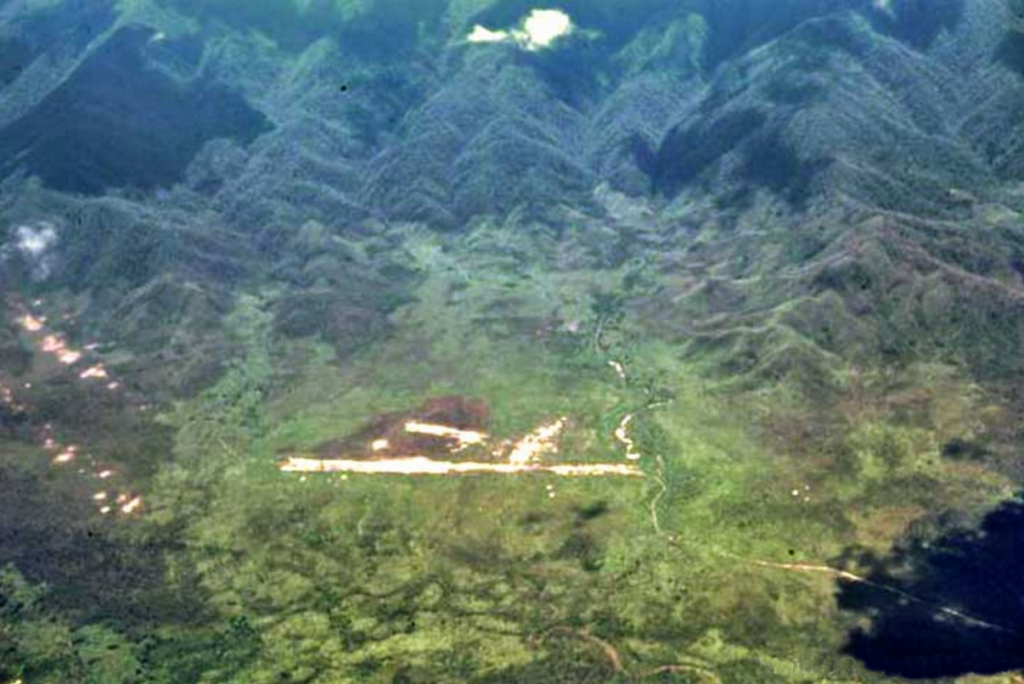
The three remaining Skyraiders piloted by Captains Lucas, Hague and Vazquez had made the hair-raising rescue possible by constantly bombing and strafing the enemy. Lucas’ bird was hit and badly damaged and all three were out of ammunition as Bernie pulled Jump aboard. They made another low pass at the enemy positions because as Lucas pointed out later, “The VC didn’t know we were out of ordnance!” After the battle, 300 Vietcong bodies were counted along the wall of the A Shau outpost.
Another flight of Skyraiders arrived as Bernie Fisher and his three wingmen departed. That afternoon 13 of the 17 Special Forces survivors were successfully evacuated from the fort. Describing the air attacks, one of the survivors said later, “It took all the pressure off the east wall of the fort and enabled us to escape.”
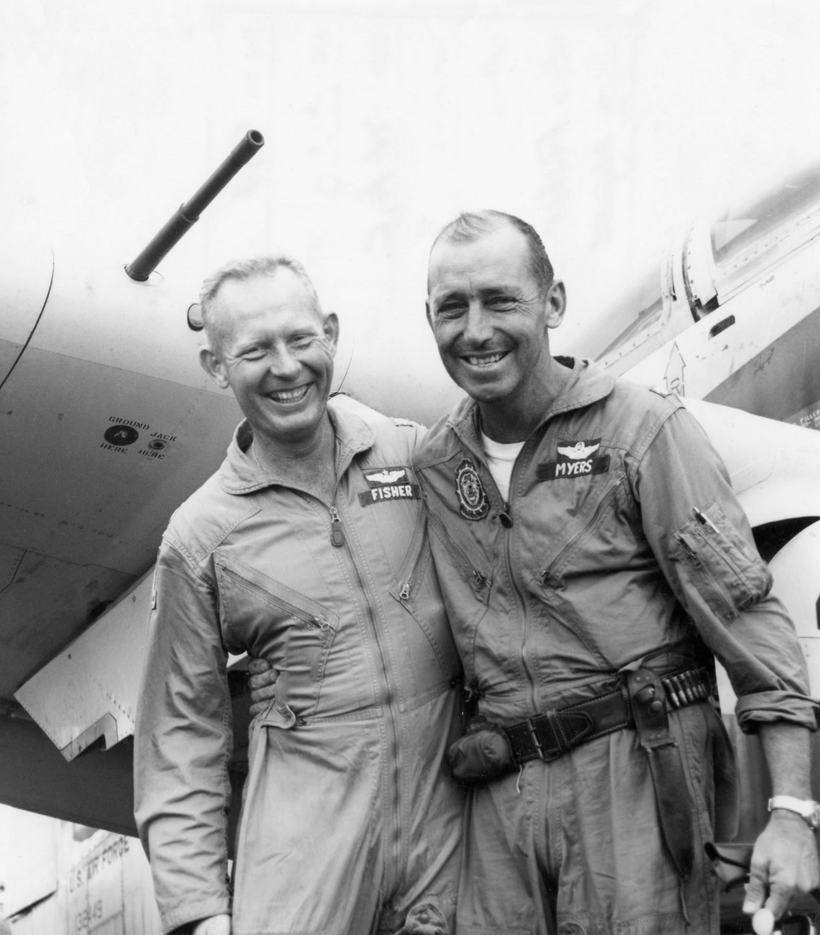



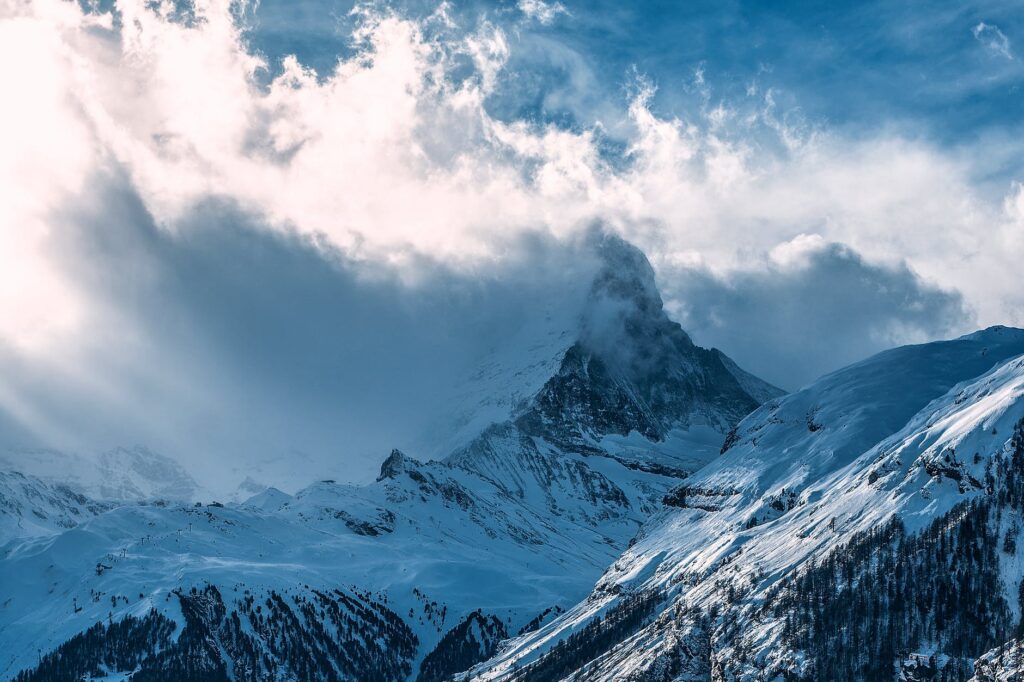





They don’t hardly make crackas like that no mo’